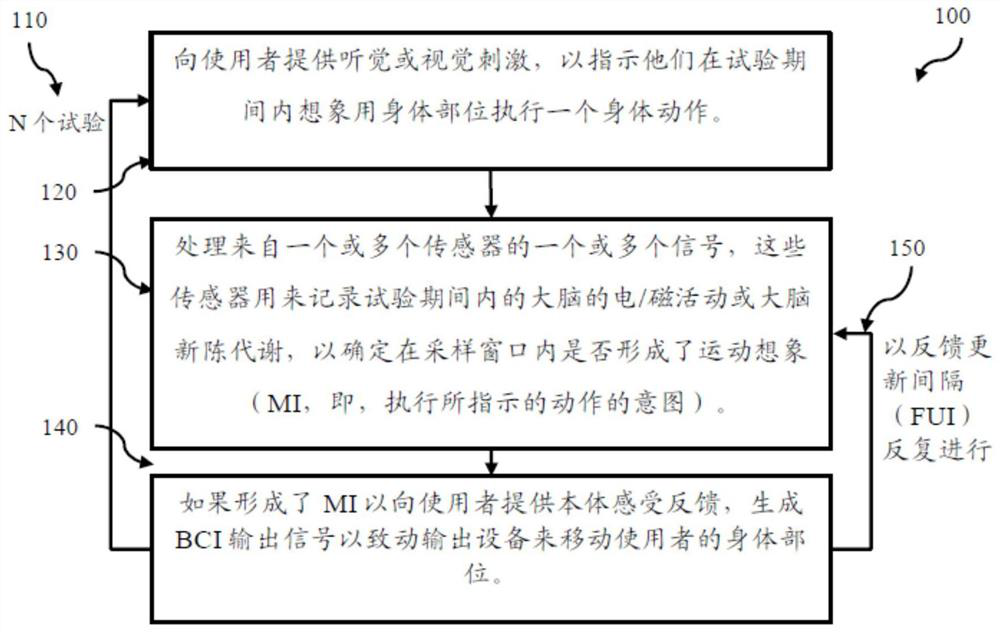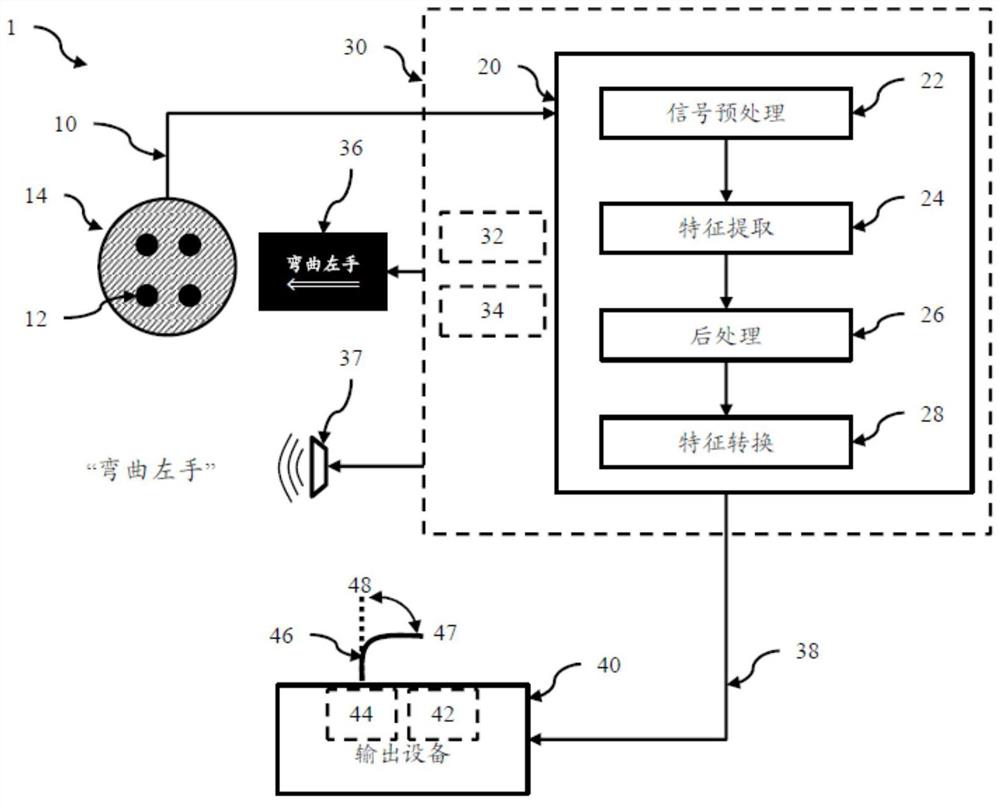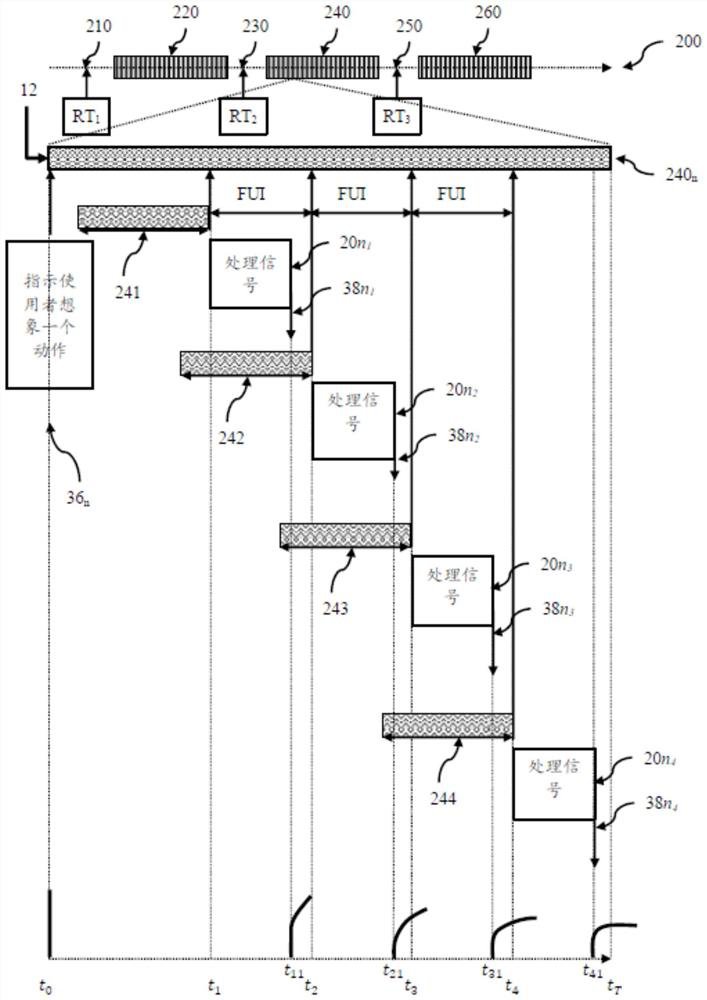Stroke rehabilitation method and system using a brain-computer interface (BCI)
A brain-computer interface and rehabilitation method technology, applied in the field of rehabilitation systems, can solve problems such as weakening neuron synaptic connections
- Summary
- Abstract
- Description
- Claims
- Application Information
AI Technical Summary
Problems solved by technology
Method used
Image
Examples
Embodiment Construction
[0081] now refer to Figure 1A and1B , which shows a flowchart of a motor imagery (MI)-based brain-computer interface (BCI) rehabilitation method 100 and a MI-based BCI rehabilitation system 1 according to an embodiment. Embodiments of the method and system focus on providing more optimal (compared to prior art systems) feedback by using a Feedback Update Interval (FUI) of 100 ms or less throughout the treatment. A further embodiment uses reaction time measurements to select the optimal FUI value for the patient and gradually decreases the FUI value over the course of treatment. Reaction time measurements of the healthy limb were used to determine the lower limit of the FUI value, while reaction time measurements of the affected limb were used to determine the initial FUI value. Optimization of FUI has not been studied before, and previous studies on the use of BCI for stroke rehabilitation with real-time proprioceptive feedback typically used FUI in the 200–300 ms range. In ...
PUM
 Login to View More
Login to View More Abstract
Description
Claims
Application Information
 Login to View More
Login to View More - R&D
- Intellectual Property
- Life Sciences
- Materials
- Tech Scout
- Unparalleled Data Quality
- Higher Quality Content
- 60% Fewer Hallucinations
Browse by: Latest US Patents, China's latest patents, Technical Efficacy Thesaurus, Application Domain, Technology Topic, Popular Technical Reports.
© 2025 PatSnap. All rights reserved.Legal|Privacy policy|Modern Slavery Act Transparency Statement|Sitemap|About US| Contact US: help@patsnap.com



